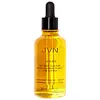What's inside
What's inside
 Key Ingredients
Key Ingredients

 Benefits
Benefits

 Concerns
Concerns

 Ingredients Side-by-side
Ingredients Side-by-side

Squalane
EmollientHydrogenated Farnesene
EmollientBisabolol
MaskingOcimum Basilicum Hairy Root Culture Extract
Skin ConditioningOryza Sativa Bran Extract
Skin ConditioningCocos Nucifera Oil
MaskingCurcuma Longa Root Extract
MaskingHelianthus Annuus Extract
EmollientTocopherol
AntioxidantRosmarinus Officinalis Leaf Extract
AntimicrobialHelianthus Annuus Seed Oil
EmollientMoringa Oleifera Seed Oil
EmollientMelia Azadirachta Flower Extract
Skin ConditioningMelia Azadirachta Bark Extract
AntimicrobialOcimum Sanctum Leaf Extract
Skin ConditioningCorallina Officinalis Extract
Skin ConditioningOcimum Basilicum Flower/Leaf Extract
TonicMelia Azadirachta Extract
Skin ConditioningCitrus Reticulata Peel Oil
MaskingJasminum Officinale Oil
MaskingMelia Azadirachta Leaf Extract
Skin ConditioningParfum
MaskingLimonene
PerfumingLinalool
PerfumingSqualane, Hydrogenated Farnesene, Bisabolol, Ocimum Basilicum Hairy Root Culture Extract, Oryza Sativa Bran Extract, Cocos Nucifera Oil, Curcuma Longa Root Extract, Helianthus Annuus Extract, Tocopherol, Rosmarinus Officinalis Leaf Extract, Helianthus Annuus Seed Oil, Moringa Oleifera Seed Oil, Melia Azadirachta Flower Extract, Melia Azadirachta Bark Extract, Ocimum Sanctum Leaf Extract, Corallina Officinalis Extract, Ocimum Basilicum Flower/Leaf Extract, Melia Azadirachta Extract, Citrus Reticulata Peel Oil, Jasminum Officinale Oil, Melia Azadirachta Leaf Extract, Parfum, Limonene, Linalool
Water
Skin ConditioningPropanediol
SolventButylene Glycol
HumectantGlycerin
HumectantAcetyl Tetrapeptide-3
Skin ProtectingBiotinoyl Tripeptide-1
Lactobacillus
Skin ConditioningSaccharomyces/Rice Ferment Filtrate
Skin ConditioningNicotiana Benthamiana Octapeptide-30 Sh-Oligopeptide-2
Skin ConditioningMentha Piperita Leaf Extract
Skin ConditioningBiotin
AntiseborrhoeicNicotiana Benthamiana Hexapeptide-40 Sh-Polypeptide-9
Nicotiana Benthamiana Hexapeptide-40 Sh-Polypeptide-86
Rosa Centifolia Flower Extract
AstringentPanthenol
Skin ConditioningTrifolium Pratense Flower Extract
AstringentZingiber Officinale Root Extract
MaskingMelia Azadirachta Leaf Extract
Skin ConditioningMelia Azadirachta Flower Extract
Skin ConditioningCoccinia Indica Fruit Extract
Skin ConditioningCorallina Officinalis Extract
Skin ConditioningLeuconostoc/Radish Root Ferment Filtrate
AntimicrobialDextran
Sodium Phytate
Parfum
MaskingCitric Acid
BufferingPotassium Sorbate
PreservativeEthylhexylglycerin
Skin ConditioningPhenoxyethanol
PreservativeLinalool
PerfumingWater, Propanediol, Butylene Glycol, Glycerin, Acetyl Tetrapeptide-3, Biotinoyl Tripeptide-1, Lactobacillus, Saccharomyces/Rice Ferment Filtrate, Nicotiana Benthamiana Octapeptide-30 Sh-Oligopeptide-2, Mentha Piperita Leaf Extract, Biotin, Nicotiana Benthamiana Hexapeptide-40 Sh-Polypeptide-9, Nicotiana Benthamiana Hexapeptide-40 Sh-Polypeptide-86, Rosa Centifolia Flower Extract, Panthenol, Trifolium Pratense Flower Extract, Zingiber Officinale Root Extract, Melia Azadirachta Leaf Extract, Melia Azadirachta Flower Extract, Coccinia Indica Fruit Extract, Corallina Officinalis Extract, Leuconostoc/Radish Root Ferment Filtrate, Dextran, Sodium Phytate, Parfum, Citric Acid, Potassium Sorbate, Ethylhexylglycerin, Phenoxyethanol, Linalool
Ingredients Explained
These ingredients are found in both products.
Ingredients higher up in an ingredient list are typically present in a larger amount.
Corallina Officinalis Extract is from the red seaweed, Corallina Officinalis. This seaweed is found all over the world but is most common in the rocky shores of Great Britain and Ireland.
Corallina Officinalis Extract contains antioxidant and emollient properties.
Extracted polysaccharides, galactose and xylose, in red algae showed antioxidant activity. Antioxidants help with anti-aging by neutralizing free-radical molecules. Free-radical molecules may damage your skin cells and DNA. Galactose is also a PHA.
Corallina Officinalis is structurally similar to coral due to its high calcium content.
Learn more about Corallina Officinalis ExtractLinalool is a fragrance and helps add scent to products. It's derived from common plants such as cinnamon, mint, citrus, and lavender.
Like Limonene, this ingredient oxidizes when exposed to air. Oxidized linalool can cause allergies and skin sensitivity.
This ingredient has a scent that is floral, spicy tropical, and citrus-like.
Learn more about LinaloolMelia Azadirachta Flower Extract is from the Neem tree. Neem trees originate from India.
Melia Azadirachta Flower Extract contains antioxidants. Antioxidants help fight free-radicals. Free-radicals are molecules that may damage your skin cells, such as pollution.
The flowers of this tree are lilac colored.
Learn more about Melia Azadirachta Flower ExtractMelia Azadirachta Leaf Extract is extract from the neem plant.
The leaves of this tree contain flavonoids and polyphenols. These two compounds are antioxidants, anti-inflammatory, and antibacterial. Further research is needed as to their effects when applied on skin.
Parfum is a catch-all term for an ingredient or more that is used to give a scent to products.
Also called "fragrance", this ingredient can be a blend of hundreds of chemicals or plant oils. This means every product with "fragrance" or "parfum" in the ingredients list is a different mixture.
For instance, Habanolide is a proprietary trade name for a specific aroma chemical. When used as a fragrance ingredient in cosmetics, most aroma chemicals fall under the broad labeling category of “FRAGRANCE” or “PARFUM” according to EU and US regulations.
The term 'parfum' or 'fragrance' is not regulated in many countries. In many cases, it is up to the brand to define this term.
For instance, many brands choose to label themselves as "fragrance-free" because they are not using synthetic fragrances. However, their products may still contain ingredients such as essential oils that are considered a fragrance by INCI standards.
One example is Calendula flower extract. Calendula is an essential oil that still imparts a scent or 'fragrance'.
Depending on the blend, the ingredients in the mixture can cause allergies and sensitivities on the skin. Some ingredients that are known EU allergens include linalool and citronellol.
Parfum can also be used to mask or cover an unpleasant scent.
The bottom line is: not all fragrances/parfum/ingredients are created equally. If you are worried about fragrances, we recommend taking a closer look at an ingredient. And of course, we always recommend speaking with a professional.
Learn more about Parfum